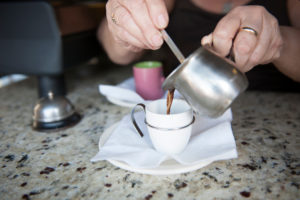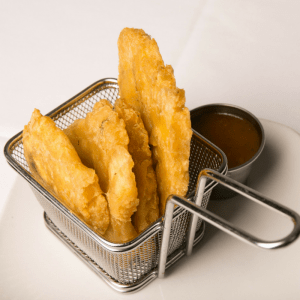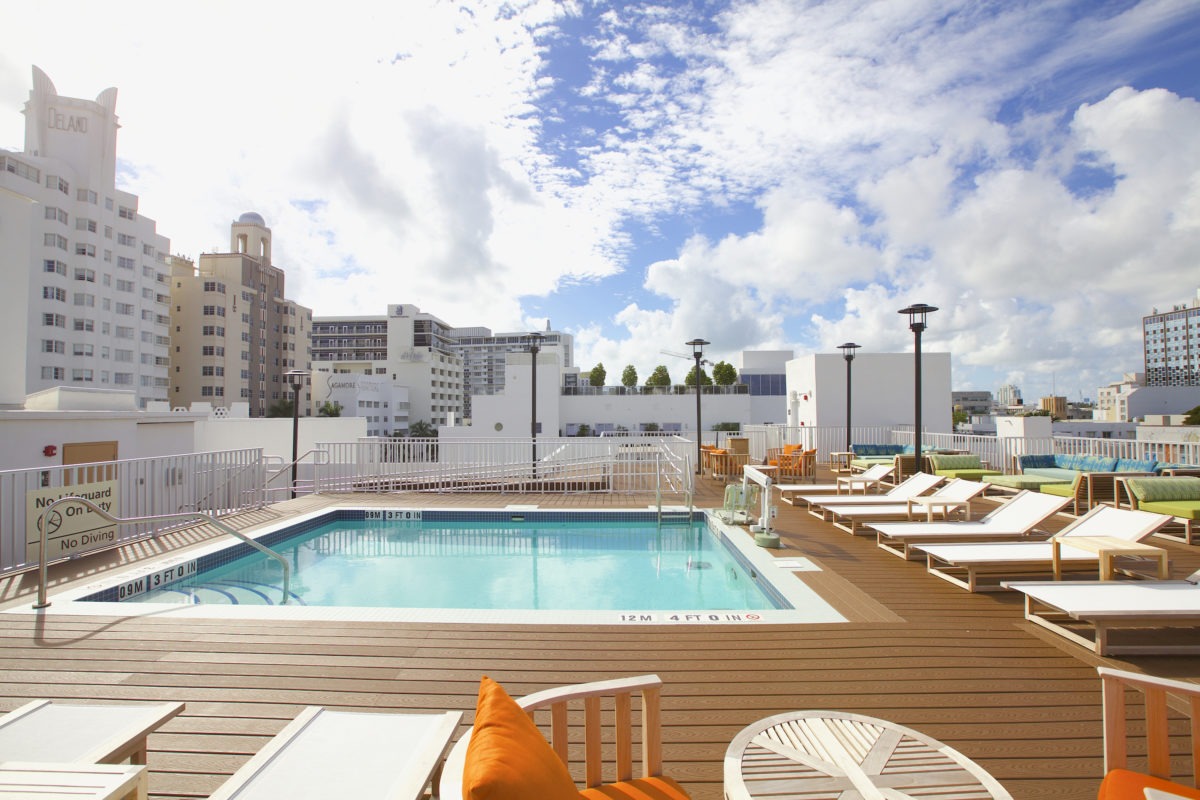
Feel the Mojo: a Guide to Cuban Food
Any cultural anthropologist worth their salt knows that to truly immerse yourself in another society, you have to break bread. For Miami’s Cuban community, a meal is a powerful thing capable of bringing people together in more ways than one. Any discussion of Cuban culture and society begins and ends with great food on the table.
The Basics: Coffee and Cubanos

Enjoying a Cuban espresso | Photo: Greater Miami Convention and Visitors Bureau
Wandering down Calle Ocho (8th Street) in Little Havana, it’s easy to see that Cubans love their coffee – especially espresso. Eschewing the bitter taste of a high-octane brew, Cuban-style espresso, called cafecito, whips demerara sugar into the strong first drops from the espresso machine, creating a kind of espresso syrup. The rest of the espresso shot is then added to the mix for an ultra-sweet kick.
If you plan to stay by the airport, the Hilton Miami Airport Blue Lagoon puts you minutes from all the best coffee shops in Miami’s Cuban Mecca. Start your day like the Little Havana locals, with a café Cubano at the famed Versailles Restaurant or local hotspot La Carreta. You can be just as close to this unique area if you’re using downtown and Port Miami as your base by staying at the Hampton Inn & Suites Miami/Brickell-Downtown or Homewood Suites Miami/Brickell-Downtown.

Hilton Miami Airport Blue Lagoon
After a mid-morning espresso wears off, it’s time for perhaps the most traditional Cuban lunch dish possible, the sandwich known as a Cubano. Piled high with roasted pork or ham (often both), Swiss cheese, pickles, and mustard, a Cubano is the quintessential midday meal in Miami. Traditional Cuban sandwiches use pork slow-roasted in mojo marinade: a mixture of citrus juices, garlic, oregano, olive oil, and other assorted spices.

Enriqueta’s Cuban sandwich | Photo: Daniel P. on Yelp
Perhaps the most important aspect of the sandwich, the bread, is similar to a French baguette, but lighter and flakier, thanks to a dollop of lard added to the dough. The sandwich can also be pressed like a panini until it’s flat and the cheese is melted. (A grilled version on softer, sweeter bread is called a medianoche, or “midnight” sandwich.) While there’s no shortage of places in Miami to get a great Cubano, Enriqueta’s Sandwich Shop in Wynwood, Miami’s famed modern art district, serves up an excellent lunch and is a must-stop for those staying at the DoubleTree by Hilton Grand Hotel Biscayne Bay.
For Cubans, the best food always comes with a great experience. Places like Ball & Chain, a famed 50’s nightclub turned restaurant and lounge located in Little Havana, offers live high-energy Latin music to their guests. You’ll even see people walking by outside nodding their head and tapping their toes to the smooth notes of Miami salsa, mamba, jazz and more. Don’t settle for just a meal when there are culinary and cultural experiences to be had!

DoubleTree by Hilton Grand Hotel Biscayne Bay
Slow-Cooked Flavors

Tostones | Photo: Yuca Restaurant & Lounge
Much like other Latin cultures, Cuban cuisine is anchored by beans and rice. In Miami, the beans are black and the rice is white, and the combination is known as Moros y Cristianos. A foundation of most evening meals, Moros y Cristianos serves as a bed for traditional Cuban dishes like picadillo (ground meat and vegetables), vaca frita (shredded skirt steak) or ropa vieja (“old clothes”), a slow-cooked beef dish often served with peppers and other vegetables. Much of Cuban cuisine revolves around meat cooked slowly with infusions of aromatics such as garlic, onion, and citrus. Slow cooking not only tenderizes the meat, but allows it to take on the spice of whatever it’s cooked with.
If you’re staying at the Hampton Inn Miami South Beach, the spot to check out for great Cuban cuisine is Yuca Restaurant & Lounge. Short for “Young Urban Cuban-American,” Yuca serves as a liaison between Miami’s flashy style and old-school Cuban flavors. When you’re there, make sure you try the tostones, a twice-fried plantain chip eaten as a side dish to the main course. Tostones are often dipped in a mojo sauce or drizzled with lime juice but be careful, it’s hard to eat just one!

Outdoor rooftop pool at the Hampton Inn Miami South Beach
Tasting your way through Miami is an adventure in Cuban culture and society. It’s clear wherever you go that those who left the tiny island nation didn’t leave their love for tradition and culinary customs with their relatives back home. Exploring the authentic culinary delights of Cuban Miami should be at the top of everyone’s bucket list!









